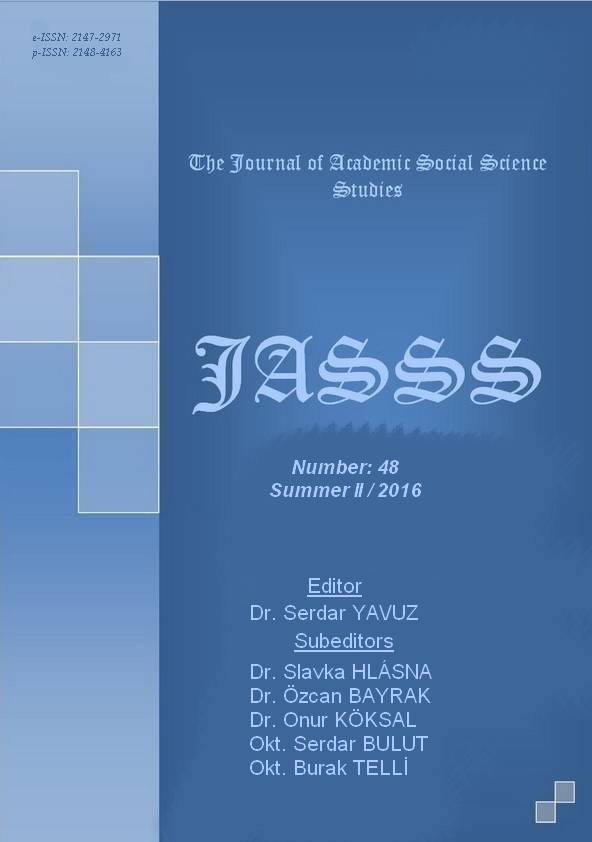Author :
Abstract
Dünyada nüfus artışına paralel olarak, besin ve su gereksinimi de artış göstermektedir. Ancak su kaynakları sınırlıdır ve küresel iklim değişimleri sonucunda yaşanan kuraklıklar, bu çok önemli kaynağın giderek azalmasına neden olmaktadır. Ne yazık ki, bu değişimden en fazla tarım sektörü etkilenmektedir. Çünkü tarımsal üretim doğa ve iklim koşullarına bağlıdır ve en fazla su tüketim miktarı da bu sektördedir. Bu nedenle su politikası, tüm dünyada olduğu gibi Türkiye’de de önem kazanmış, modern sulama yöntemleri kullanılmaya başlanmıştır. GAP kapsamında planlanan Suruç Sulama Projesi de, su kaynaklarının daha ekonomik kullanılabilmesi amacıyla hazırlanan bir projedir. Projenin en önemli özelliği, Türkiye’nin en büyük, dünyanın da 5. büyük sulama tüneli olan Suruç Tüneli’ne sahip olmasıdır. Atatürk Barajı’ndan alınan sularla brüt 94.814 ha alan sulanabilecektir. Suruç Sulama Projesi’ni, Harran Ovası Projesi’nden farklı kılan özellik, üreticilerin basınçlı sistemler ile üretim yapılmasına uygun olarak planlanmasıdır. Harran Ovası’nda karşılaşılan tuzlanma, Suruç Projesi’nin hazırlanmasında önemli bir örnek olmuştur. Bu çalışmada da, küresel iklim değişikliği göz önünde bulundurularak suyun önemine değinilmiştir. Ayrıca, Suruç Ovası Sulama Projesi hakkında genel bilgiler sunmak, mevcut durumu ve karşılaşılabilecek olası sorunları ortaya koymak amaçlanmıştır. Ova tam olarak sulanmaya açılmadan önce alınabilecek önlemlere yer verilmiştir. Projeden, tarımsal verimliliği ve ürün çeşitliliğini arttırması, bu artışlarla ve tarımsal üretim faaliyetlerinin çeşitlendirilmesi yoluyla kırsal ve kentsel bölgelerdeki gelir düzeyini arttırması, tarımsal sanayilere girdi sağlaması, istihdam olanaklarını arttırarak kırsal ve kentsel nüfusun dışa göç etme eğilimini en aza indirmesi, ihraç edilebilir ürünlerin üretimine katkı sunması beklenmektedir.
Keywords
Abstract
In the world, the need for food and water shows increase in parallel with the increase in world population. However, water resources are limited and current drought resulting from global climate changes leads to decrease in that important resource gradually. Unfortunately, agricultural sector have been affected mostly due to that change, because agricultural production depends on nature and climate conditions, so the most water consumption occurs in the agriculture sector. Therefore, water policy has gained importance in Turkey as worldwide and modern irrigation techniques have been started to implement. Suruc Plain Irrigation Project, which took place in the scope of Southeastern Anatolia Project, is a project that has been done with the aim of being able to use water sources efficiently. The strongest part of the project is that it includes Suruc Tunnel which is the biggest irrigation tunnel in Turkey and the fifth biggest irrigation tunnel in the world. Thanks to the water pumped from Ataturk Dam, 94.814 hectares gross area is able to be irrigated. The difference between Suruc Plain Irrigation Project and Harran Plain Irrigation Project is that the first one was planned as a suitable agricultural production with pressurized irrigation system for producers. Salinity encountered in Harran Plain has become a significant example for the design of Suruc Plain Irrigation Project. In this study, it is referred to the importance of water by taking global climate changes into consideration. Besides, it is aimed to give an outline of Suruc Plain Irrigation Project and to assert both current status quo and the possible problems that could be encountered. It is also referred to possible precautions before the plain is opened to irrigation completely. It is expected from this Project to increase in agricultural productivity and product range, to increase in the level of income in the countryside and urban region with the help of





